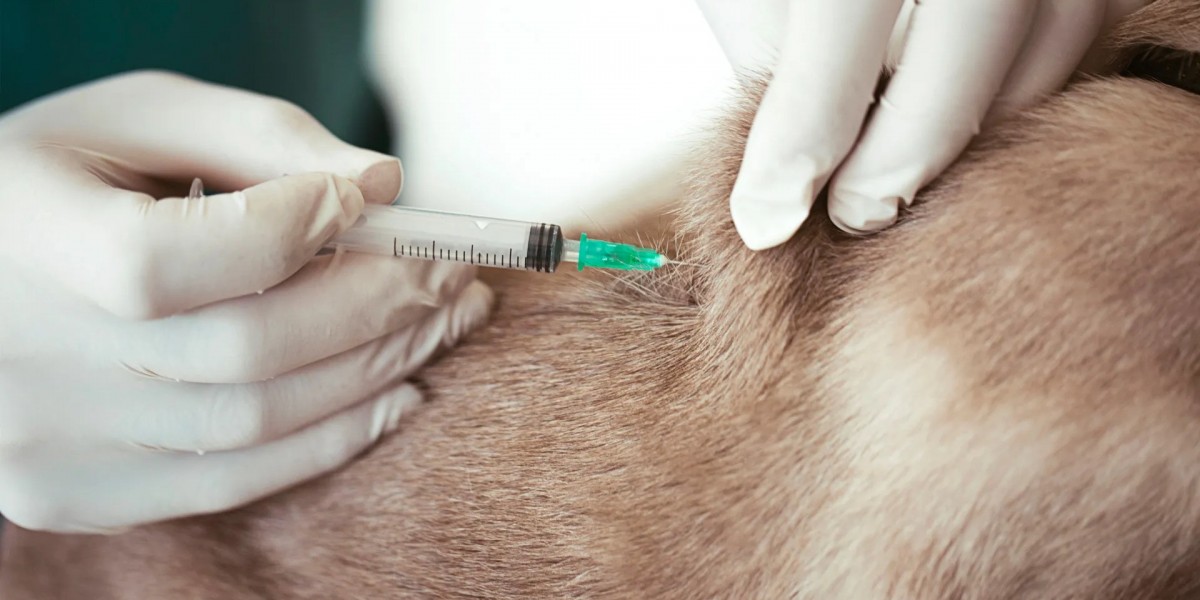Chlorhexidine is a commonly used antiseptic that has gained popularity in veterinary medicine due to its effectiveness in treating a wide variety of infections and maintaining a dog's overall health. As a pet owner, it is essential to understand the uses, benefits, and potential risks associated with this powerful compound. Whether your dog is dealing with a skin infection, oral health issue, or post-surgery care, chlorhexidine may be a recommended solution by your veterinarian. In this guide, well explore what chlorhexidine is, how it works, and how to use it safely for your canine companion.
What is Chlorhexidine?
Chlorhexidine is an antimicrobial agent that is used for cleaning wounds, treating infections, and reducing bacteria on the skin and mucous membranes. It is available in various formulations, including shampoos, sprays, wipes, and solutions. Chlorhexidine is known for its ability to kill a wide range of bacteria, fungi, and viruses, making it a versatile solution for managing infections and promoting healing. In veterinary medicine, chlorhexidine is often used to treat infections caused by bacteria and fungi, as well as to prevent the spread of harmful microorganisms in a dogs body.
The compound is a broad-spectrum disinfectant, and it works by disrupting the cellular structure of bacteria, thereby preventing their growth and replication. It is commonly used in both human and veterinary care, making it a well-established and trusted antiseptic.
The Benefits of Chlorhexidine for Dogs
Chlorhexidine provides multiple benefits when used appropriately in treating your dogs health conditions. Here are a few key reasons why it is frequently recommended by veterinarians:
1. Skin Infections
Chlorhexidine is highly effective in treating bacterial and fungal skin infections. Dogs, especially those with allergies, are prone to developing skin conditions that may lead to inflammation, itching, and redness. Chlorhexidine can be used to clean the affected areas, reduce the population of harmful bacteria, and promote healing. It is also commonly used in post-surgical care to prevent infection at the incision site.
2. Wound Care
If your dog has suffered an injury, chlorhexidine can help prevent infection by disinfecting the wound. It cleans the wound and removes debris, providing a safe environment for the body to heal naturally. Chlorhexidine is especially useful in situations where a dog may have a compromised immune system, as it can reduce the risk of secondary infections that could complicate the healing process.
3. Oral Health
Chlorhexidine is often found in pet dental products, such as oral rinses and gels, due to its ability to combat plaque and gingivitis. When used as part of a dogs oral care routine, chlorhexidine can help reduce the buildup of harmful bacteria in the mouth, thereby preventing periodontal disease and improving overall oral health. It is also used in the treatment of gum infections, mouth sores, and as a preventative measure in post-dental surgery recovery.
4. Antiseptic for Post-Surgery Care
After surgery, dogs are susceptible to infection at the surgical site, especially if the area is not properly cared for. Chlorhexidine is commonly used to clean and disinfect the incision area, reducing the chance of postoperative complications. It not only helps to prevent infection but also promotes faster healing, allowing the dog to recover more quickly.
5. Ear Infections
Chlorhexidine is often used as part of ear drops or cleaning solutions for dogs suffering from ear infections, especially those caused by bacteria or fungi. It can help clean the ear canal, remove excess wax, and reduce inflammation. When used as directed, chlorhexidine-based ear solutions can significantly improve the health of your dogs ears, preventing further complications.
How to Use Chlorhexidine Safely
While chlorhexidine is an effective tool in treating various health issues in dogs, its crucial to use it correctly to avoid any adverse effects. The appropriate use of chlorhexidine depends on the form of the product and the specific condition you are treating. Here are some general guidelines to follow:
1. Dilution
Chlorhexidine solutions often come in concentrated forms, meaning they need to be diluted before use. Its essential to follow your veterinarian's instructions on the correct dilution ratio, as using a solution that is too strong could irritate your dogs skin or mucous membranes. The concentration of chlorhexidine can vary, with some solutions being as low as 0.05% and others up to 4%, so always check the label and ensure you are using it at the recommended strength.
2. Application
When using chlorhexidine on your dogs skin or wounds, apply the solution directly to the affected area. Be sure to clean the area thoroughly before applying the antiseptic. If you're using a chlorhexidine-based shampoo, follow the directions carefully. Typically, you'll want to massage the shampoo into the coat, let it sit for a few minutes to allow the solution to work, and then rinse thoroughly.
For ear infections, chlorhexidine ear solutions should be gently instilled into your dogs ear canal. Massage the base of the ear to ensure the solution reaches the infected area. Be sure not to use a cotton swab, as it could push debris further into the ear canal.
3. Frequency of Use
The frequency of chlorhexidine application depends on the type of infection or condition being treated. For skin infections, chlorhexidine can usually be applied once or twice a day. However, excessive use may lead to skin dryness or irritation. For oral care, chlorhexidine is typically used once or twice a day to prevent plaque buildup and treat gum infections.
Its essential to follow the guidance provided by your veterinarian, as overuse of chlorhexidine may disrupt the natural flora of your dogs skin or mouth, leading to additional complications.
Potential Risks and Side Effects of Chlorhexidine
Chlorhexidine is generally considered safe when used according to the instructions; however, like any medication or treatment, it can have side effects if used incorrectly. Some potential risks to be aware of include:
1. Skin Irritation
Chlorhexidine can cause skin irritation if used too frequently or at a high concentration. It is vital to monitor the affected area for signs of redness, swelling, or increased discomfort. If you notice any of these symptoms, discontinue use and consult with your veterinarian for alternative treatments.
2. Allergic Reactions
Although rare, some dogs may be allergic to chlorhexidine. Symptoms of an allergic reaction may include excessive itching, swelling, hives, or difficulty breathing. If you suspect your dog is having an allergic reaction, stop using the product immediately and seek veterinary attention.
3. Toxicity
While chlorhexidine is generally safe for external use, it should not be ingested. If your dog accidentally licks or swallows chlorhexidine, it could lead to gastrointestinal upset or more severe reactions. Be cautious about the amount of solution used, especially when applying it to areas your dog can reach with their tongue.
4. Eye Irritation
If chlorhexidine comes into contact with your dogs eyes, it may cause irritation or discomfort. Always take care when applying the solution, and avoid direct contact with the eyes. If your dogs eyes come into contact with chlorhexidine, flush them immediately with clean water and consult your veterinarian if irritation persists.
Conclusion
Chlorhexidine is a valuable tool in the management of various health conditions for dogs. Whether used for skin infections, oral care, wound treatment, or ear infections, it is an effective antiseptic that helps promote healing and prevent the spread of harmful bacteria. However, like any treatment, it must be used with caution and in accordance with veterinary guidelines.
If youre unsure about how to use chlorhexidine or whether its the right choice for your dogs specific condition, always consult with your veterinarian. They can provide you with the proper dosage, application instructions, and help monitor any side effects. By understanding how to use chlorhexidine safely, you can ensure your dog receives the best possible care and remains healthy and happy.







